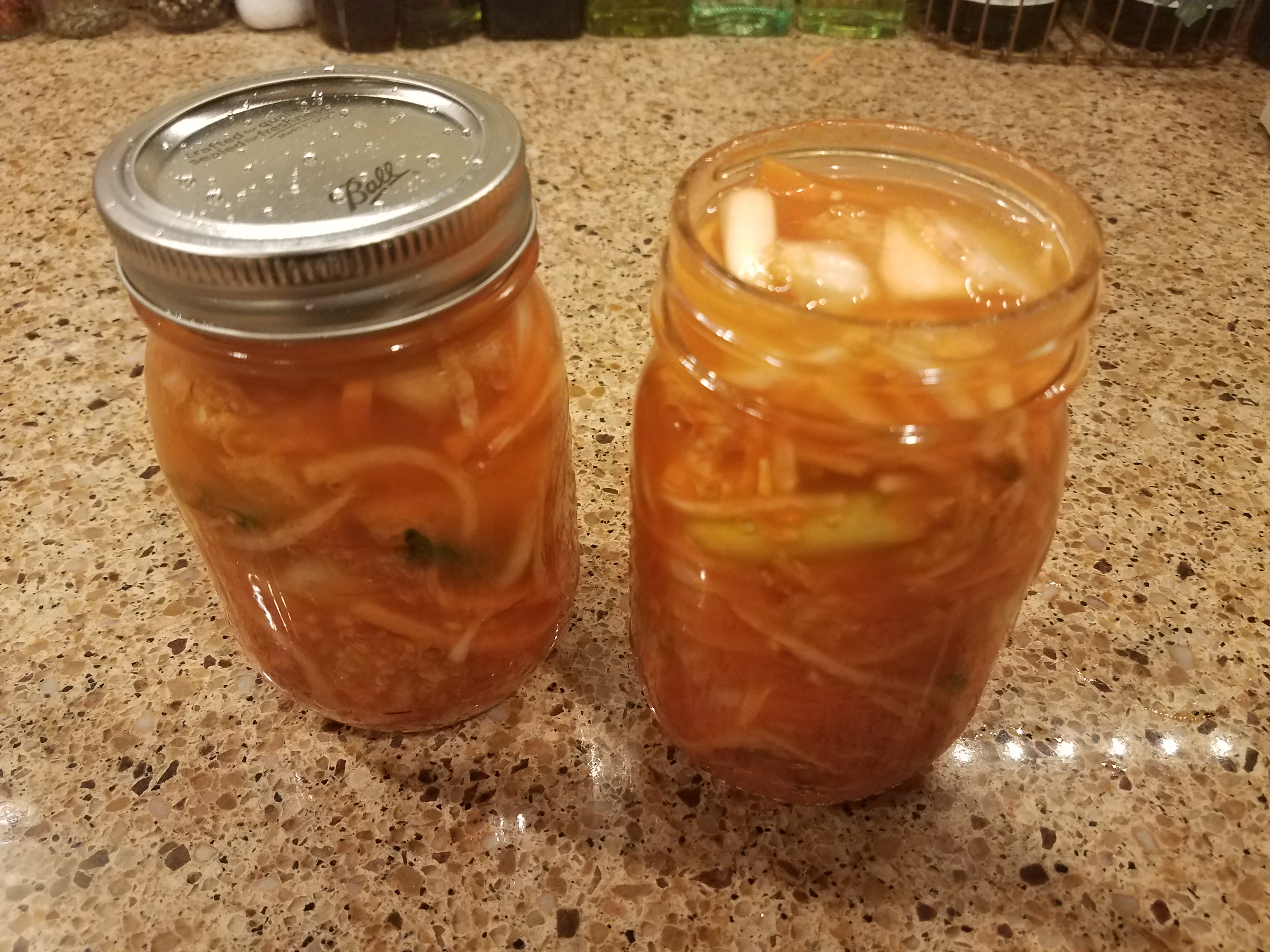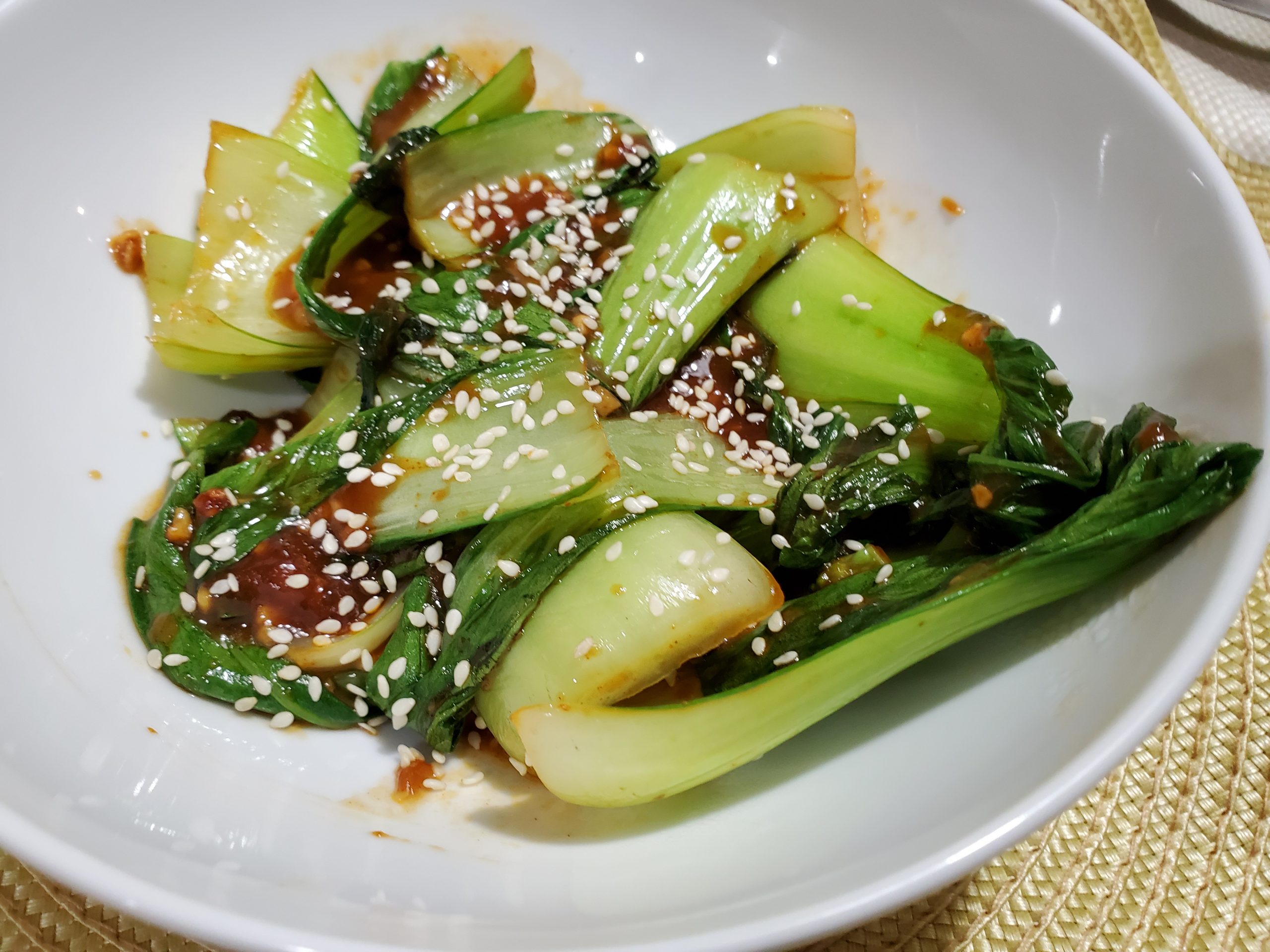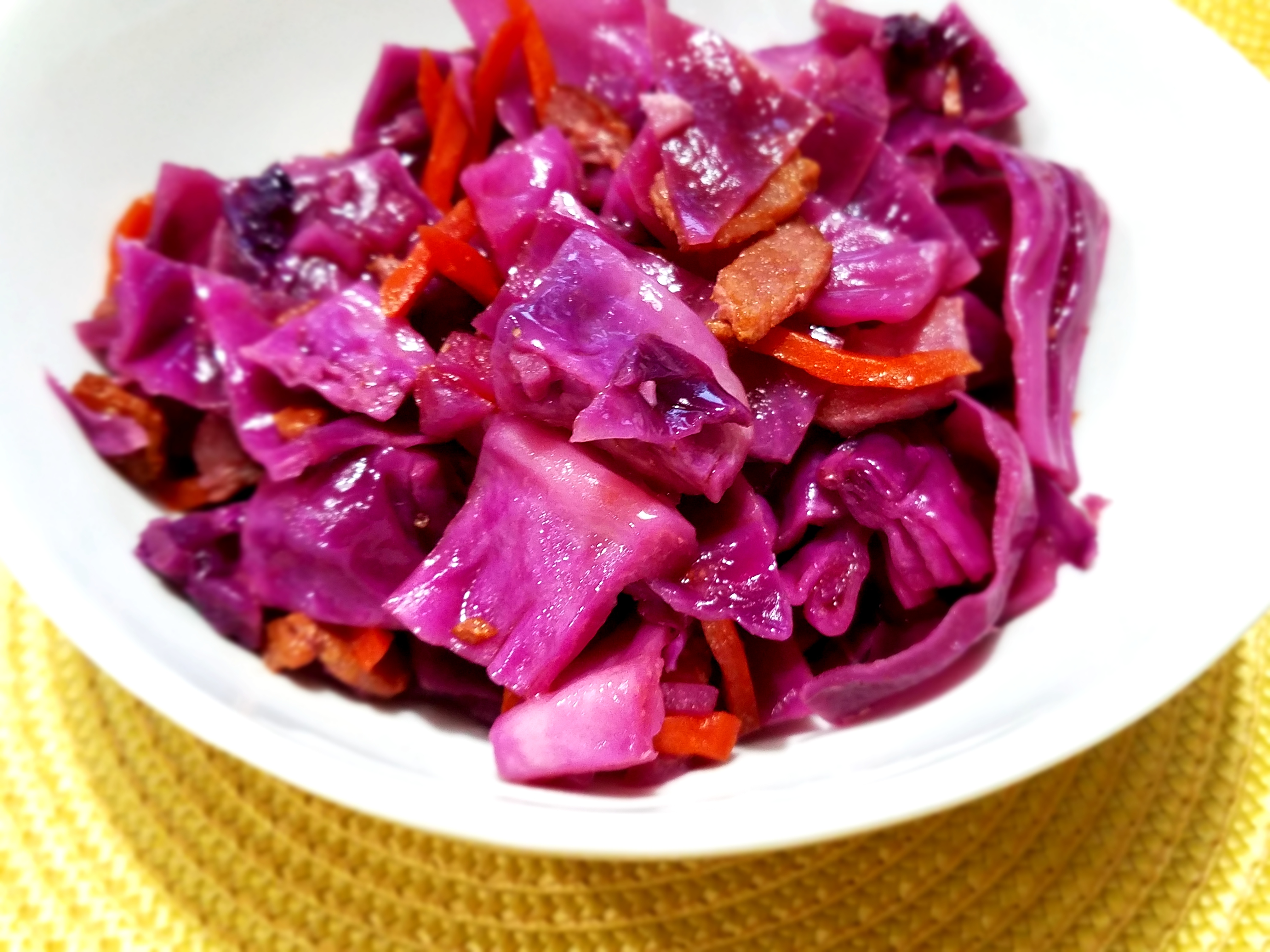
Tonight I am going way out on a limb. I have never made kimchi before, but I had some napa cabbage to use up so I thought, “what the heck, why not?”. I found several recipes online and from them I settled on the tweaked recipe below. I have to say the process for this ‘easy kimchi’ was fun. And do you know what the best part is… I can say I made it! Now, I wonder what fun things I can make with my kimchi later this week?
- 1 lb napa cabbage, cored and cut up into 1 inch slices
- 3 oz daikon radish, julienned
- 1 carrot, julienned
- 1 scallion, sliced into 1 inch segments
- 2 tsp ginger, grated
- 1 tsp garlic, minced
- 2 tbsp kosher or sea salt, plus 1 tbsp
- 2 cups distilled water
- 4 - 5 cups water
- 1 tbsp fish sauce
- 1 tbsp gochujang
- Place the cabbage in a large bowl and sprinkle with ½ the salt.
- Mix the 2 tablespoons of salt into the cabbage.
- Add the 4 - 5 cups of water until the cabbage is just covered.
- Place another bowl or plate on top of the cabbage to keep it submerged in the salt solution for at least 1½ hours.
- When done soaking and softening, drain the cabbage in a fine colander and rinse well with cold water.
- Clean the large bowl for re-use.
- In a smaller bowl, add the sugar, fish sauce, and gochujang, mixing into it forms a paste.
- In a second small bowl, add the remaining tablespoon of salt and 2 cups of distilled water.
- Mix to dissolve the salt.
- Add the drained cabbage to the large bowl along with garlic, ginger, daikon, carrot and green onion.
- While wearing kitchen food prep gloves, toss to combine.
- Add the gochujang paste and massage it into the cabbage mixture.
- Place the coated cabbage mixture into a 1 quart or two 1 pint mason jars.
- Add the brine, lightly tapping the jar to settle the cabbage.
- Add just enough brine to cover the cabbage.
- Add the lids and seal just past finger tight.
- Store for 24 hours on a pantry shelf away from heat and sunlight.
- After 24 hours, unscrew the lid over a sink to release the pressure.
- Store in a refrigerator for up to 1 month.

Place the cabbage in a large bowl and sprinkle with 1/2 the salt. Mix the 2 tablespoons of salt into the cabbage. Add the 4 – 5 cups of water until the cabbage is just covered. Place another bowl or plate on top of the cabbage to keep it submerged in the salt solution for at least 1 1/2 hours. When done soaking and softening, drain the cabbage in a fine colander and rinse well with cold water. Clean the large bowl for re-use.

In a smaller bowl, add the sugar, fish sauce, and gochujang, mixing into it forms a paste. In a second small bowl, add the remaining tablespoon of salt and 2 cups of distilled water. Mix to dissolve the salt.

Add the drained cabbage to the large bowl along with garlic, ginger, daikon, carrot and green onion. While wearing kitchen food prep gloves, toss to combine. Add the gochujang paste and massage it into the cabbage mixture.

Place the coated cabbage mixture into a 1 quart or two 1 pint mason jars. Add the brine, lightly tapping the jar to settle the cabbage. Add just enough brine to cover the cabbage. Add the lids and seal just past finger tight.

Store for 24 hours on a pantry shelf away from heat and sunlight. After 24 hours, unscrew the lid over a sink to release the pressure. Store in a refrigerator for up to 1 month.
Save
Save
Save
Save
Save
Save
Save
Share this:
- Click to share on Facebook (Opens in new window)
- Click to share on Pinterest (Opens in new window)
- Click to share on Twitter (Opens in new window)
- Click to share on Tumblr (Opens in new window)
- Click to share on Reddit (Opens in new window)
- Click to share on WhatsApp (Opens in new window)
- Click to email a link to a friend (Opens in new window)
- Click to print (Opens in new window)
Related Posts
Bok Choy Namul (Korean-style Bok Choy)
Here is a delicious side dish from Korea that really shines. I had some baby…
Share this:
- Click to share on Facebook (Opens in new window)
- Click to share on Pinterest (Opens in new window)
- Click to share on Twitter (Opens in new window)
- Click to share on Tumblr (Opens in new window)
- Click to share on Reddit (Opens in new window)
- Click to share on WhatsApp (Opens in new window)
- Click to email a link to a friend (Opens in new window)
- Click to print (Opens in new window)
Sous Vide Braised Red Cabbage
One of the first posts I wrote for Cooking-4-One was a recipe for…
Share this:
- Click to share on Facebook (Opens in new window)
- Click to share on Pinterest (Opens in new window)
- Click to share on Twitter (Opens in new window)
- Click to share on Tumblr (Opens in new window)
- Click to share on Reddit (Opens in new window)
- Click to share on WhatsApp (Opens in new window)
- Click to email a link to a friend (Opens in new window)
- Click to print (Opens in new window)



Leave A Comment